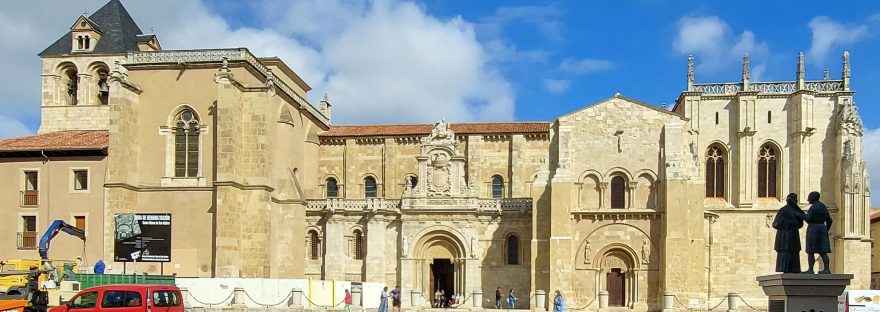We arrived very early at the Plaza San Isidoro in León to have our encounter with its Basilica, considered one of the most outstanding Romanesque style architectural ensembles in Spain. This distinction has been earned due to its history, architecture, sculpture, and the conservation of very important Romanesque elements.
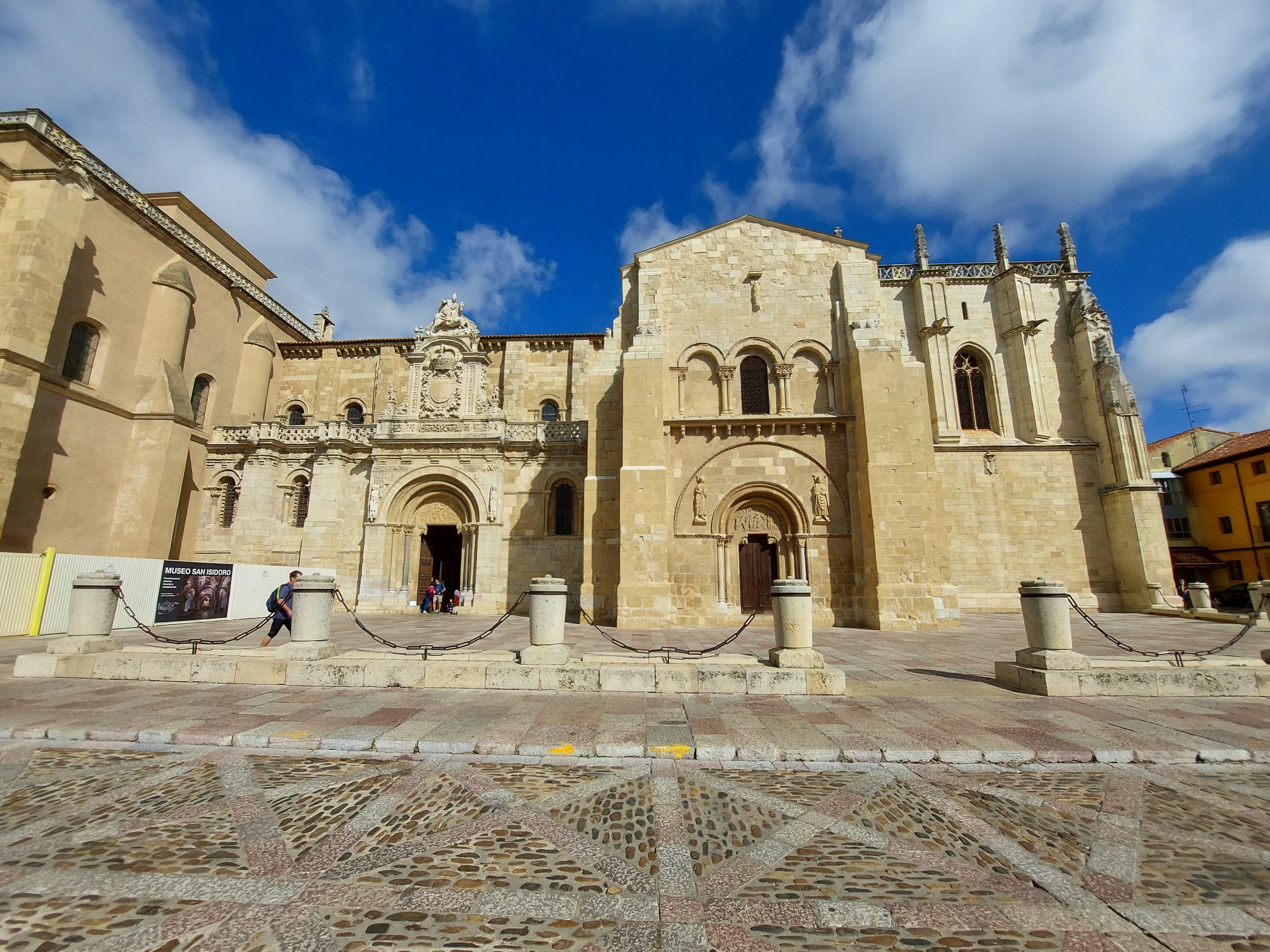
In fact, the most relevant piece of the Basilica of San Isidoro is located at the foot of the church, the Royal Pantheon. It is there where you can observe the Romanesque mural painting and original capitals, all of which makes it unique in the Romanesque world of the time. Both the Pantheon and its doors are considered the first manifestations of Romanesque art in the Leonese territories. Over the course of time, modifications were made and the following styles were added: Gothic, Renaissance and Baroque.
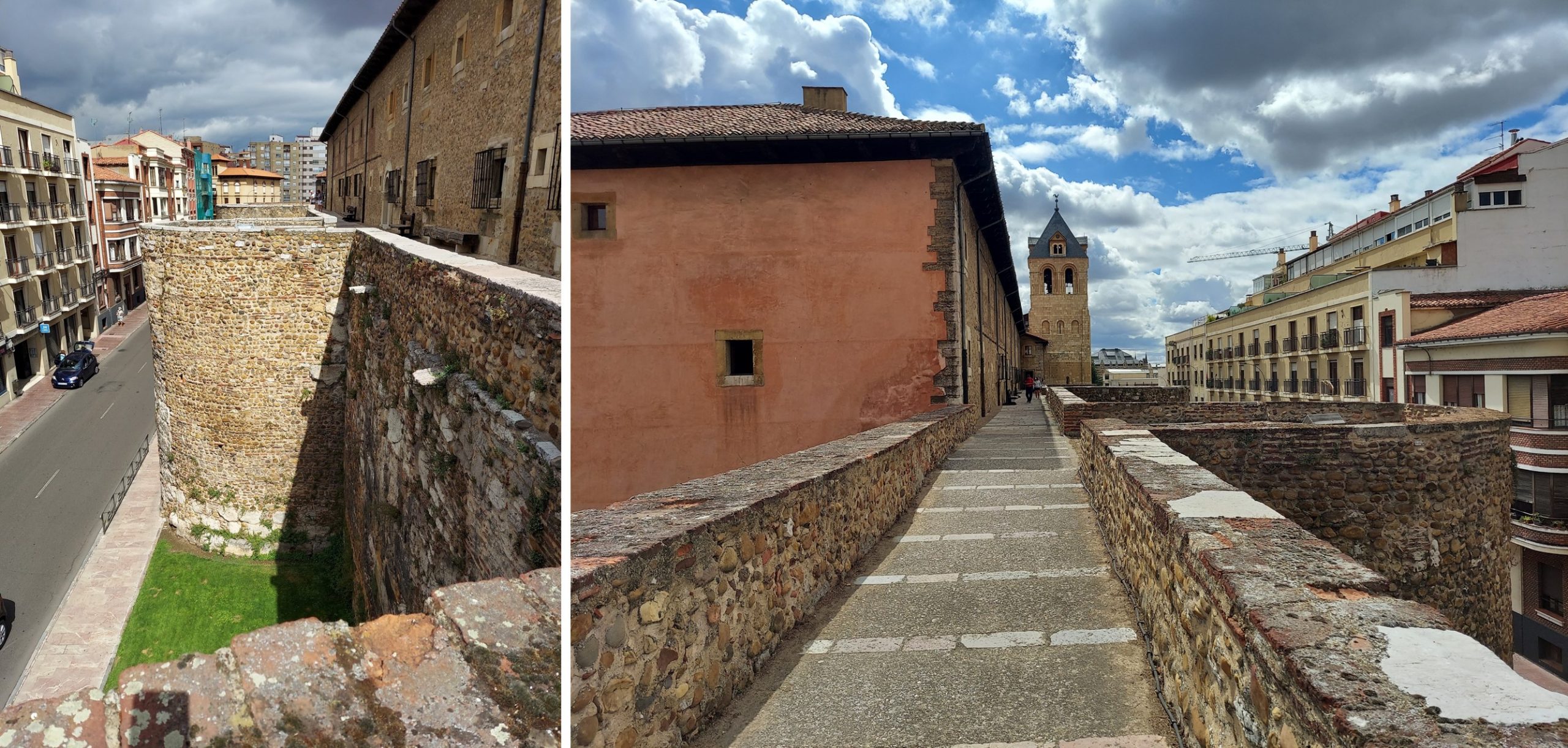
The church and monastery of what today is known as the Basilica of San Isidoro had its origins around the year 956, on a site adjacent to the Roman wall. The entire western part of the building is attached and superimposed on the wall, and is still in good condition.
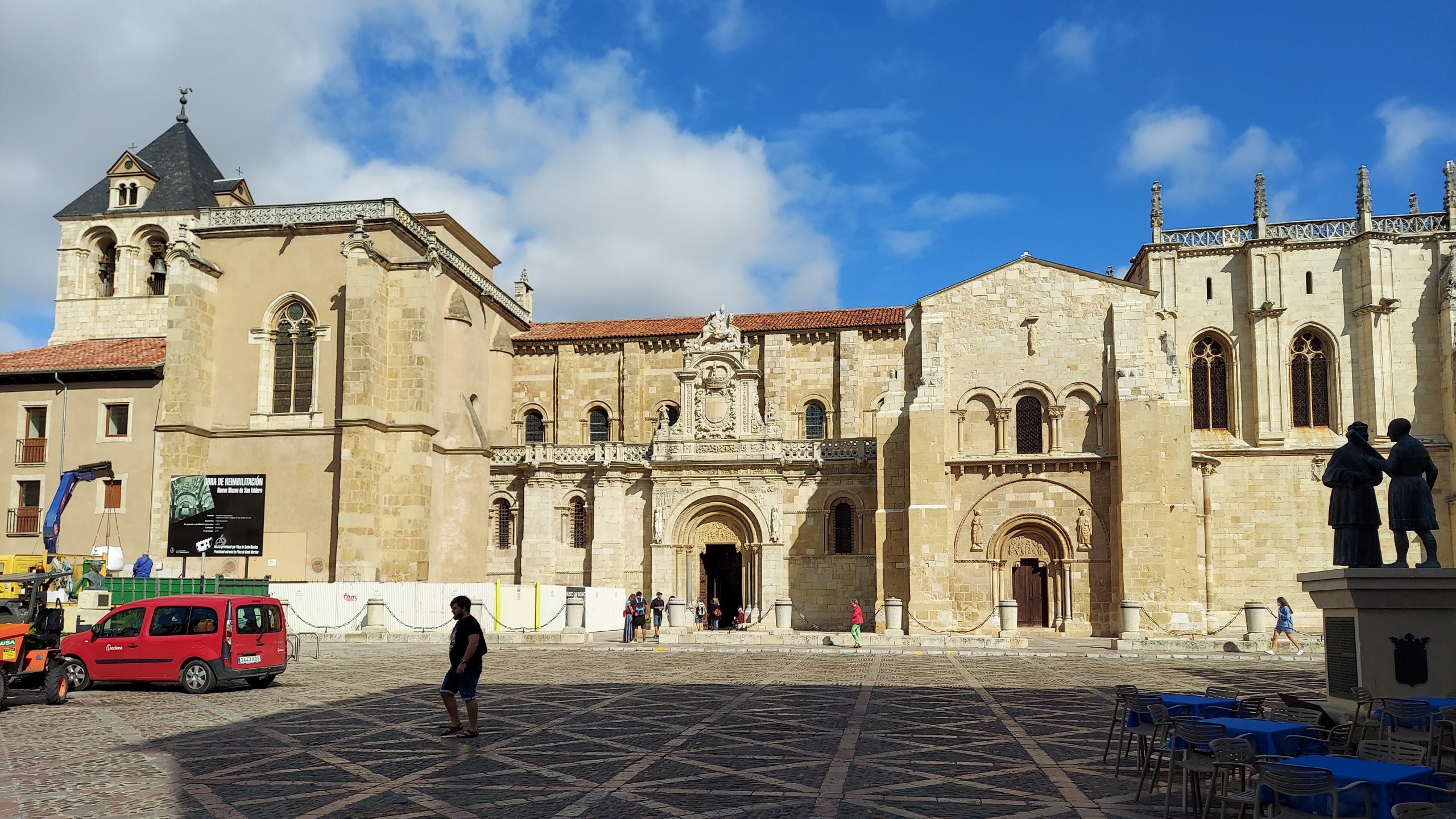
It was originally a monastery dedicated to San Pelayo, although it is said that a Roman temple was previously located on the site. With the transfer of the remains of Saint Isidore, bishop of Seville, Doctor of Spain, to León, the ownership of the temple was changed. There are no remains from the Visigothic period, nor from the Arab period, nor from the early times of the Reconquest.
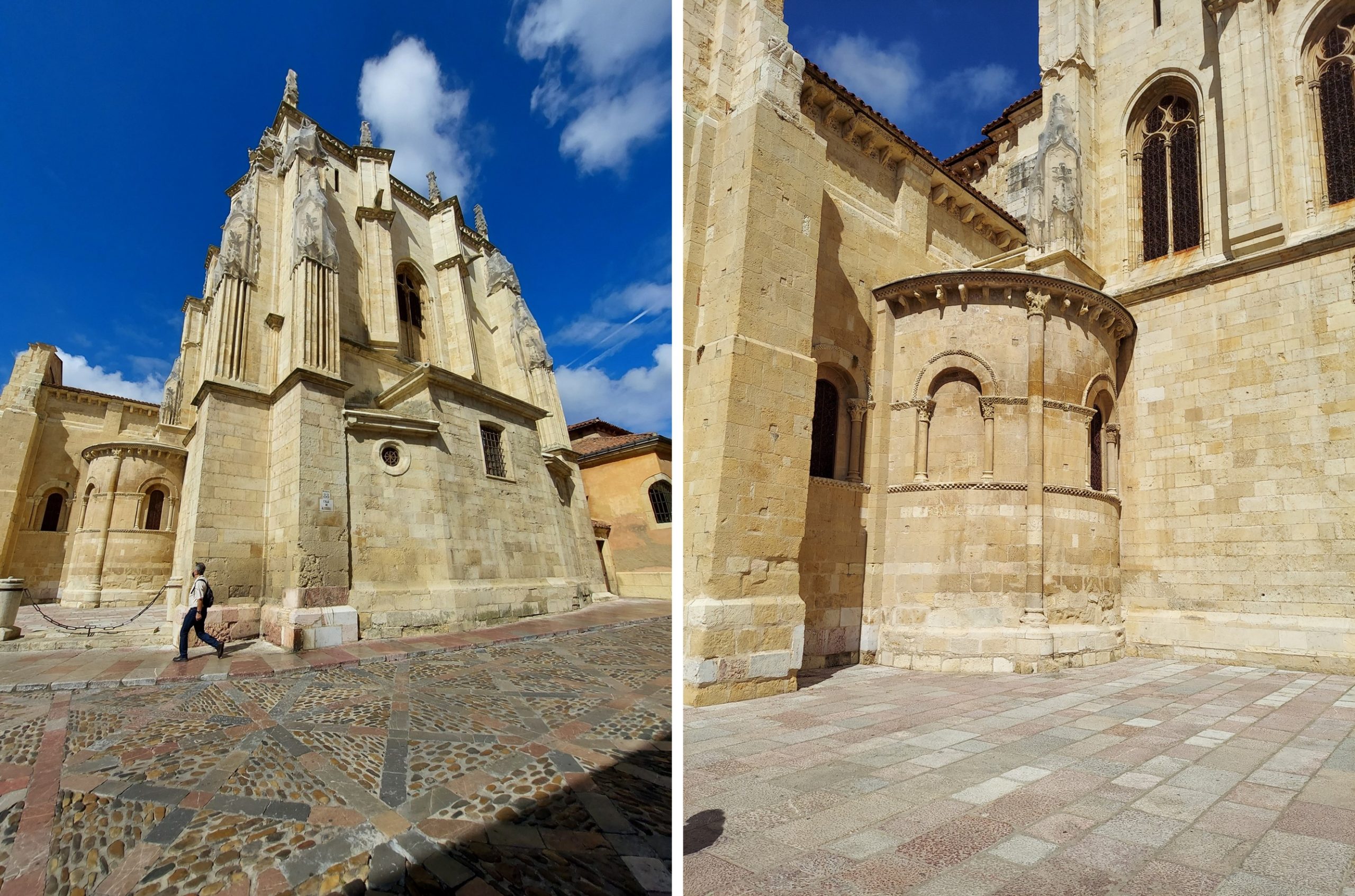
Special mention should be made of the restoration and enlargement carried out in the temple during the 11th and 12th centuries by the Infanta Urraca Fernández Zamora. The Infanta Urraca, unmarried, was also domina of the Infantado de San Pelayo and held the lordship of the monasteries of the kingdom whose head was the monastery of San Isidoro de León. On the death of her mother Sancha in 1067, she inherited the patronage and maintenance of the temple. He ordered many expansion works to be carried out. From these reforms the temple began to be known as the new church. The Infanta Urraca ordered the pictorial decoration of the Pantheon and donated many more treasures, including the famous Chalice.
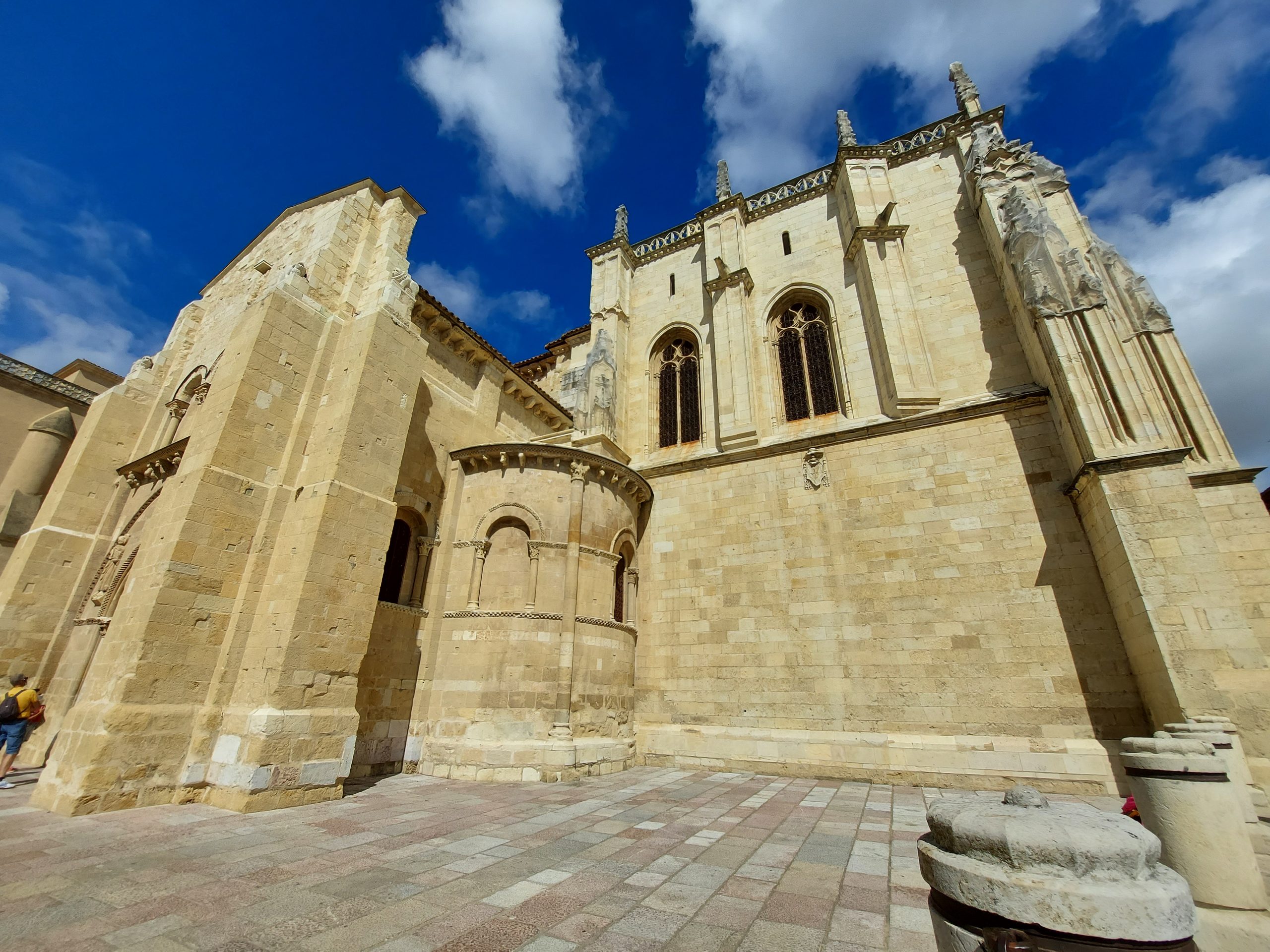
Throughout time and up to the XXI century it was transformed, going through periods of great splendor and periods of great decadence, where the influence of the successive kings and their family environment were felt. It has been a Historic-Artistic Monument since February 9, 1910.
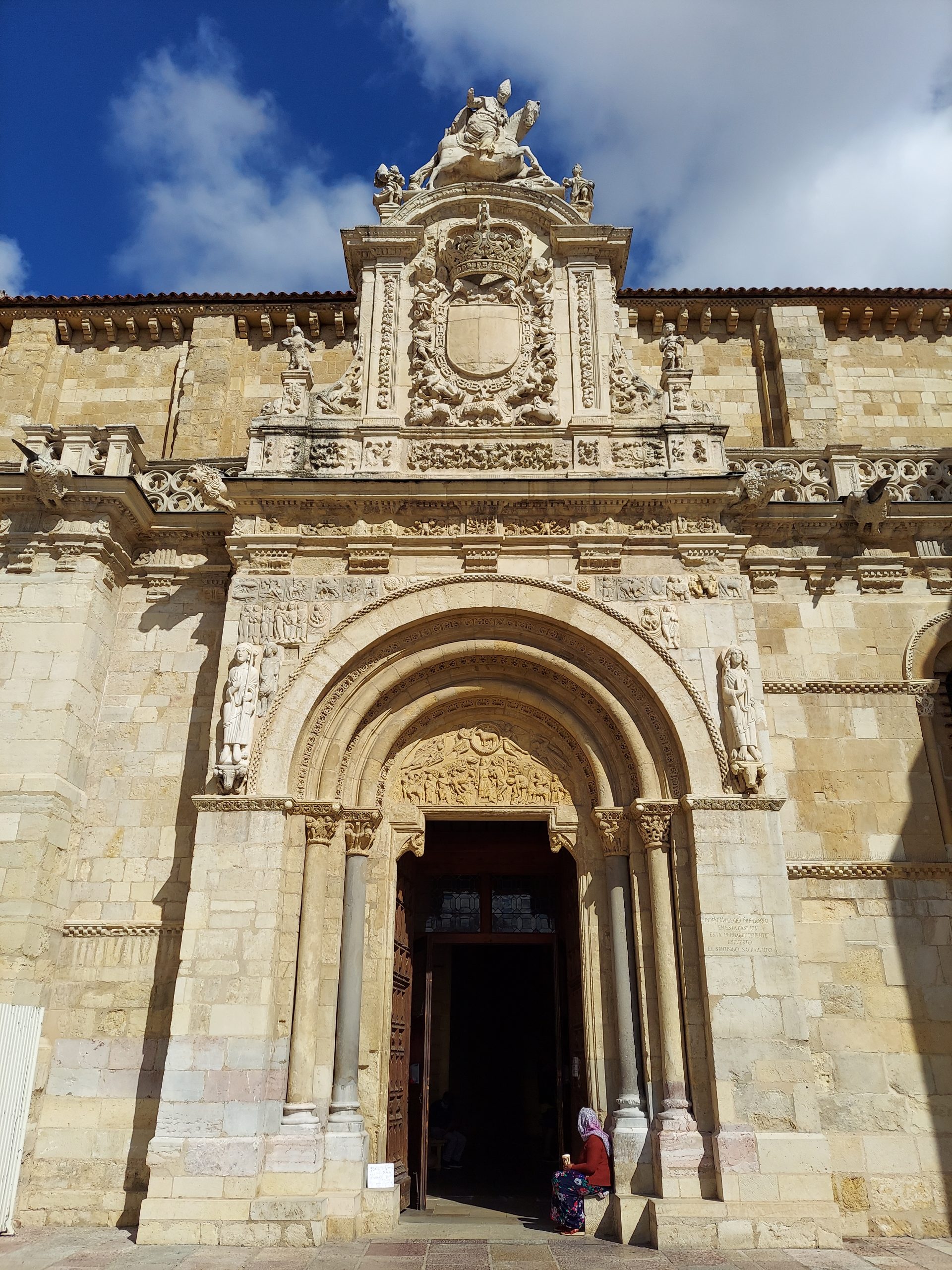
On the exterior, the Portada del Cordero, which is the oldest, and the Portada del Perdón, the most modern, stand out. The two Romanesque doorways correspond to this façade. They are two examples of the full Romanesque, the oldest that was built in the kingdom of León.
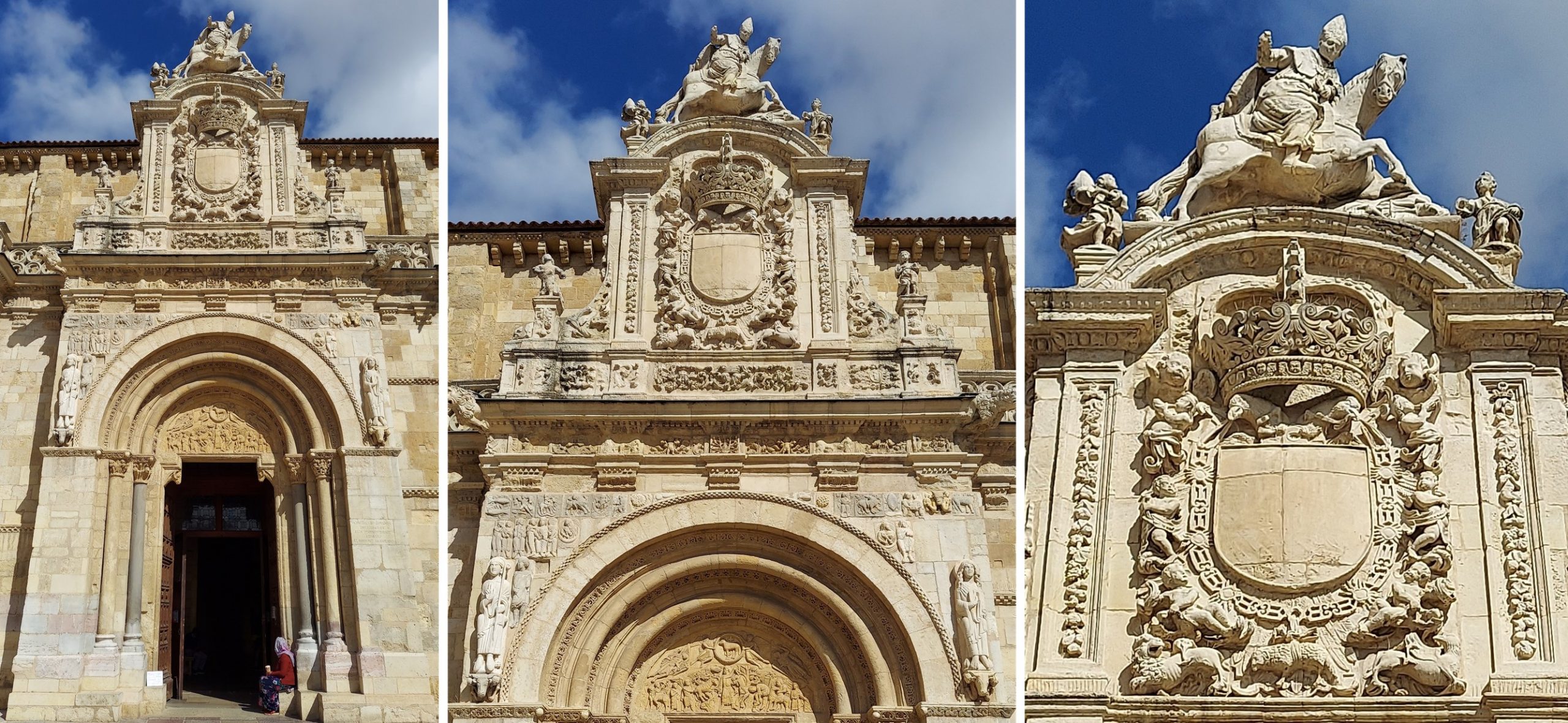
The Portada del Cordero is the main door of the Basilica of San Isidoro. It is in this doorway that the tympanum of the Lamb is shown, belonging to the full Romanesque of the 11th century. It is the first known of the Kingdom of León, containing various scenes and is sculpted in white marble. In the second body of the doorway there is a large coat of arms and San Isidoro on horseback.
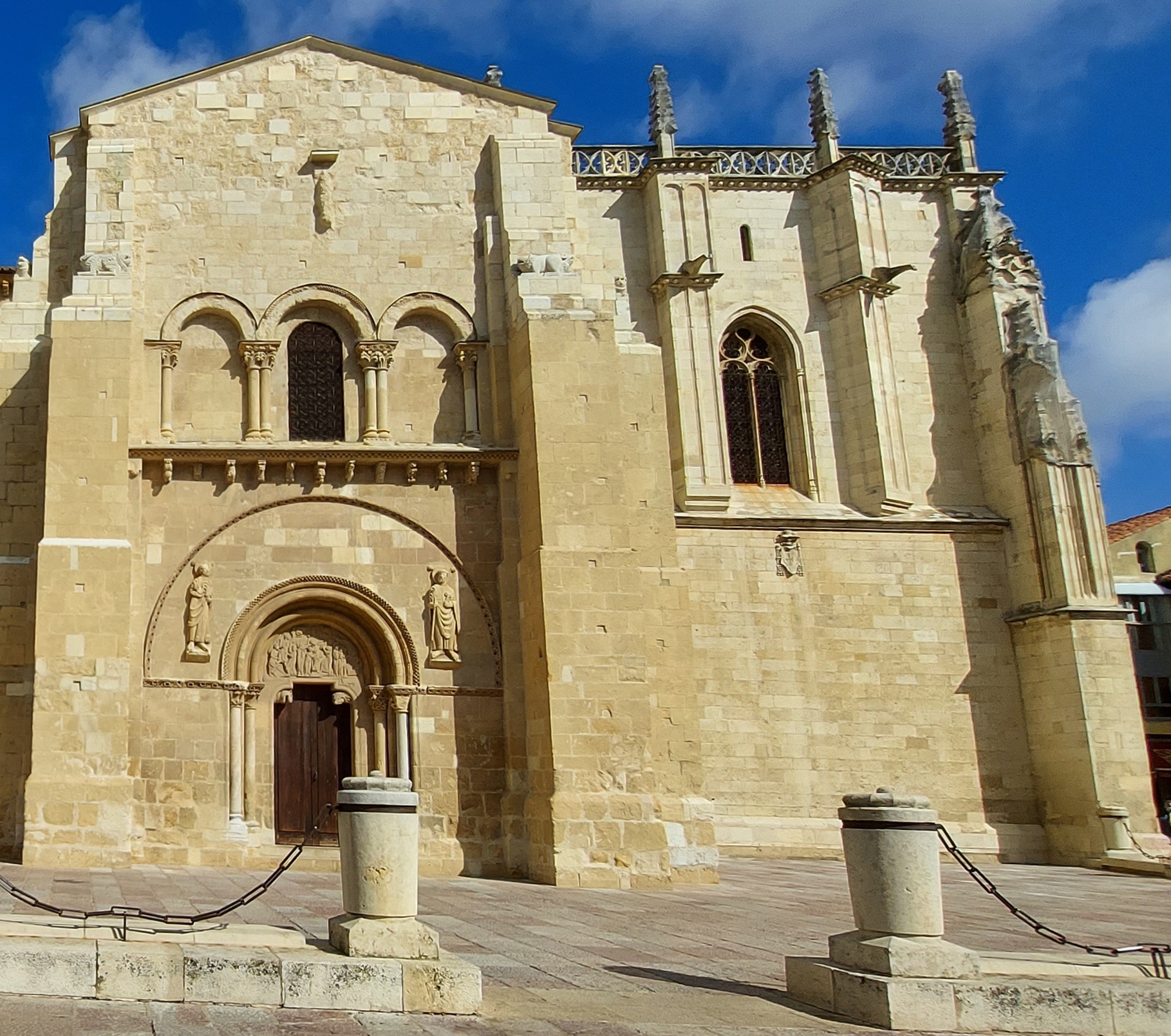
The Door of Forgiveness, gives access to the church through the transept and opens on certain occasions so that pilgrims on their way to Santiago de Compostela, can see their sins forgiven. It opens on the south façade of the transept and belongs to the full Romanesque period, and its reliefs are attributed to the master Esteban, who worked on the cathedrals of Pamplona and Santiago de Compostela. Its execution is later than the Puerta del Cordero.
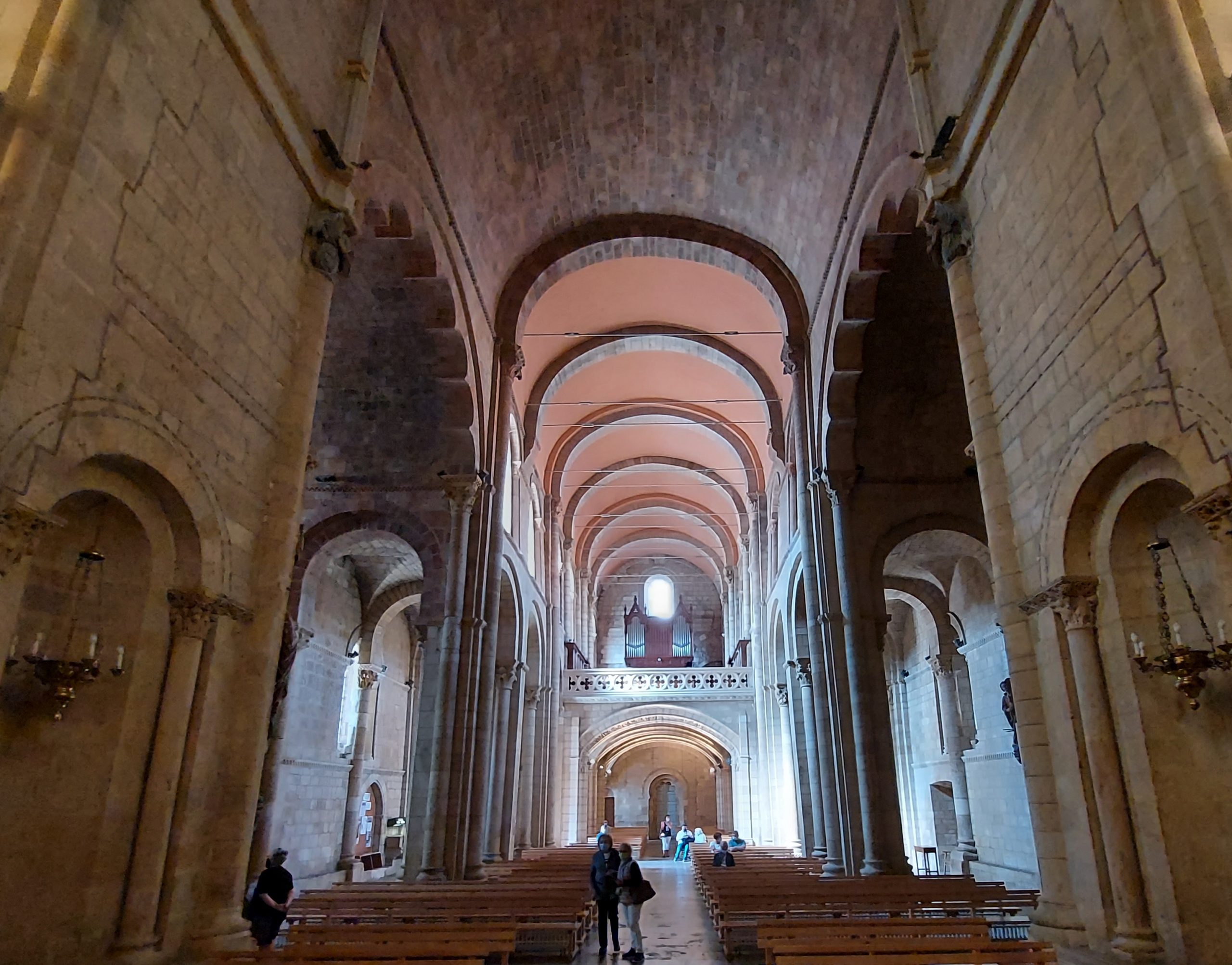
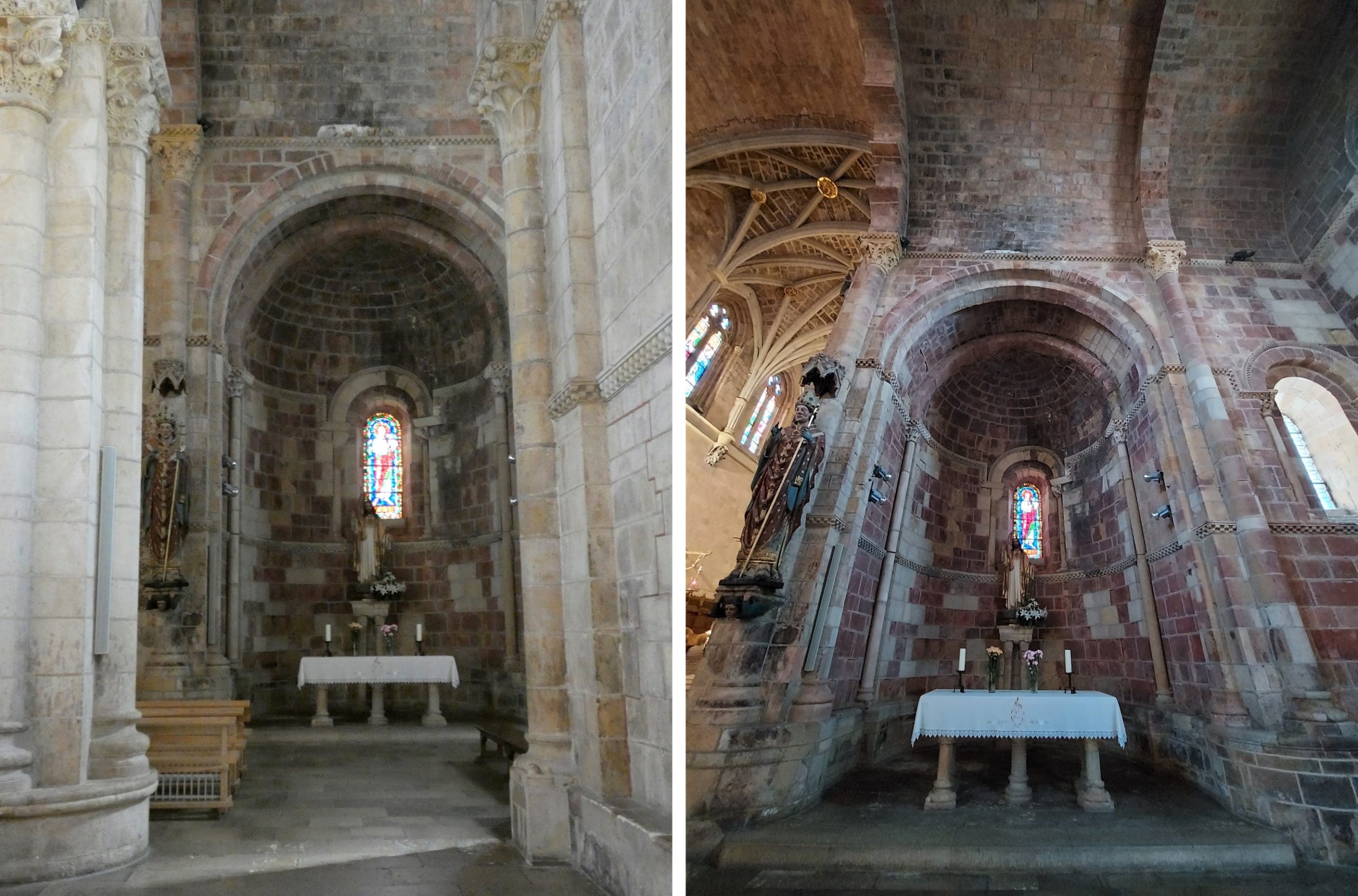
The present building has three naves and a Latin cross plan. The central apse is from the 16th century, Hispano-Flemish and the lateral apses are Romanesque with oven vault. In spite of the extensions and reconstructions carried out in the time of the Infanta Urraca, the final result is harmonious. The modifications had to be adapted to the previous building, so its apses do not have the same width or the same axis as the naves.
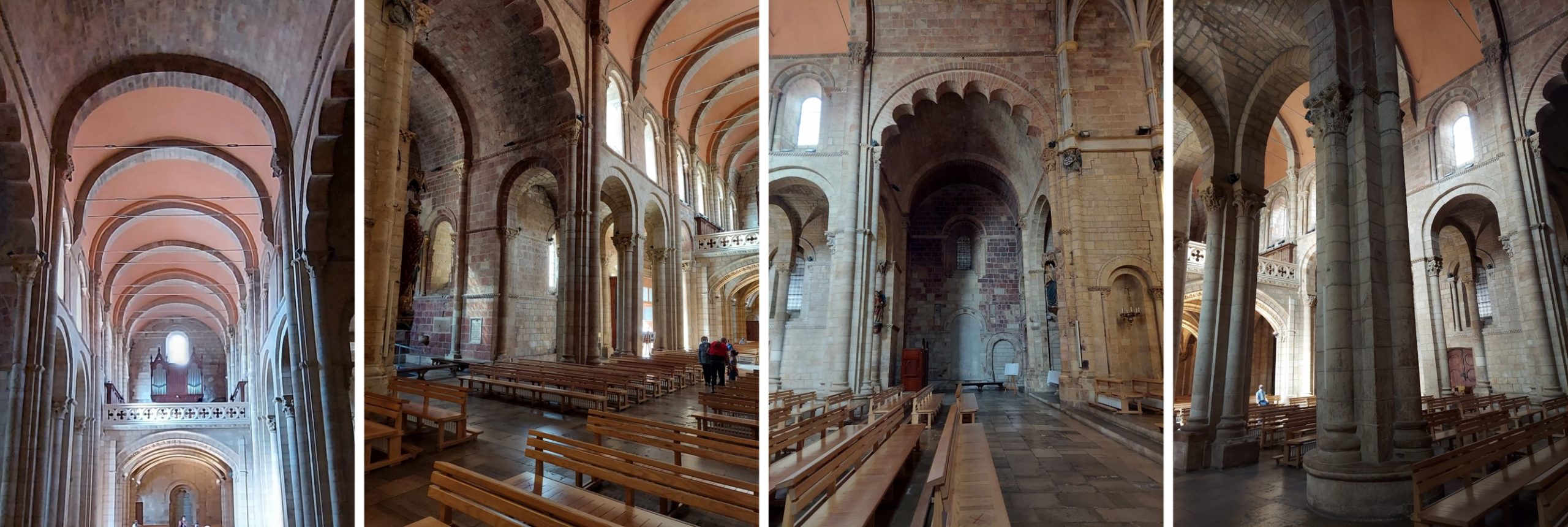
The central nave is of great height and is covered with a barrel vault (an element frequently used in Romanesque churches, usually formed by an alignment of semicircular arches), while the lateral ones have a groin vault (used to cover quadrangular spaces; the result of the intersection of two barrel vaults, which cross perpendicularly). The arches of separation of the naves have a very pronounced height; the arches of the crossing are poly-lobed (recreating the symmetrical disposition of the leaves of some plants by means of superimposed circles), detail of survival of the Mozarabic epoch.
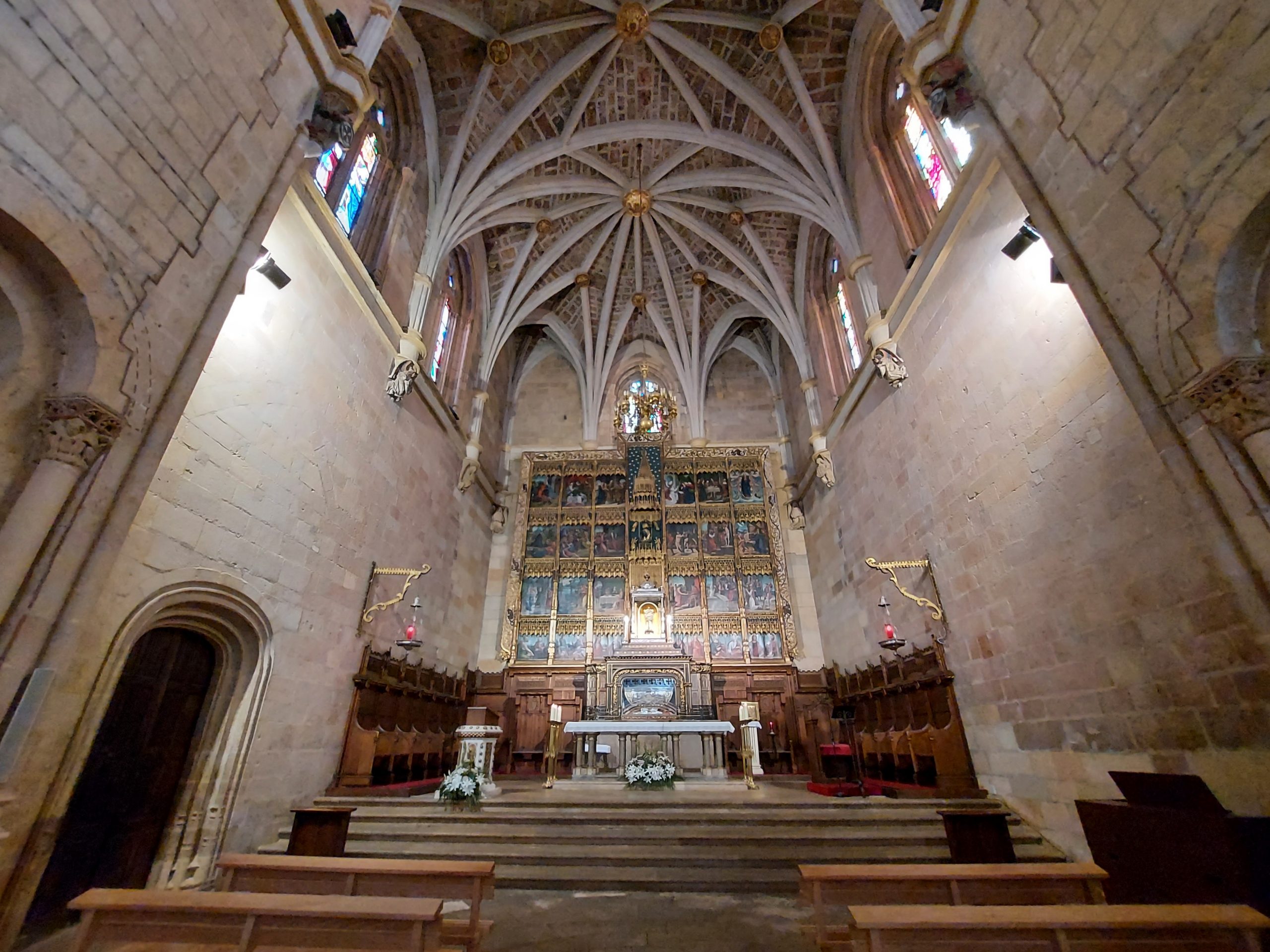
The Main Chapel of the Basilica of San Isidoro dates from the 16th century, and its architecture is attributed to Juan de Badajoz el Viejo. Father Juan de Cusanza (aka Juan de León) commissioned the work in 1513, replacing the old Romanesque chapel of the Infanta Urraca with the present Gothic.
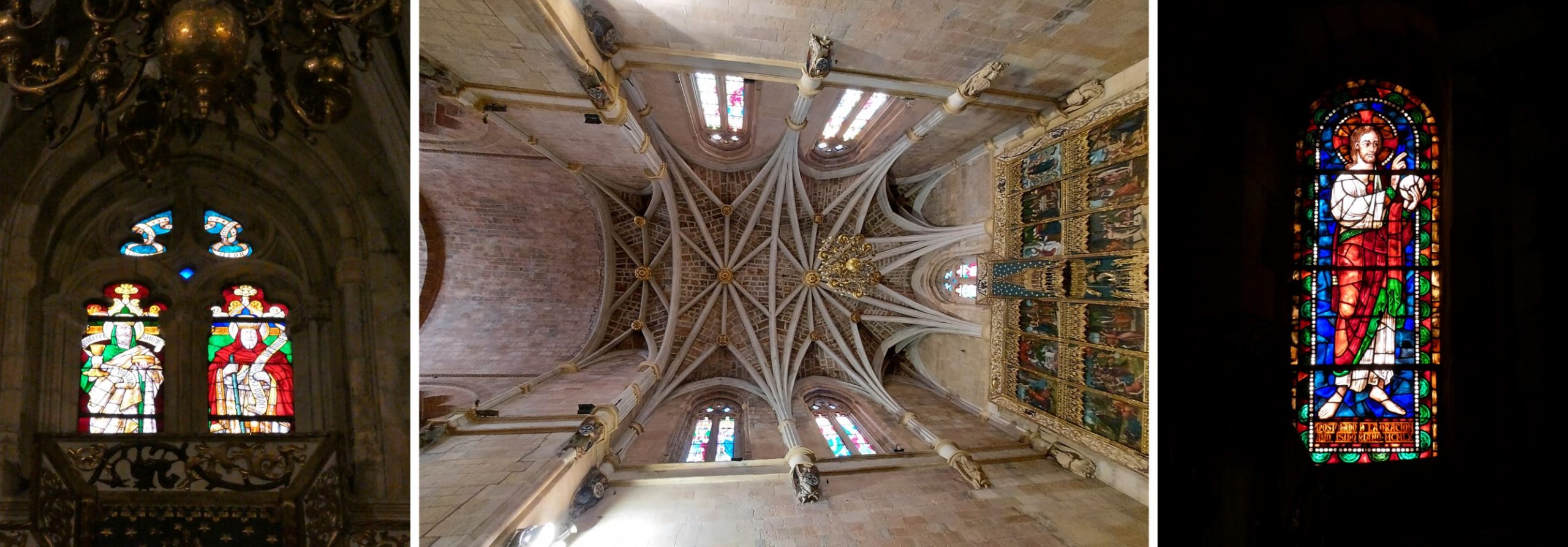
The chapel is covered by a ribbed vault with ribs. The large number of large windows in the central nave and south transept fill the interior of the main chapel with great luminosity.
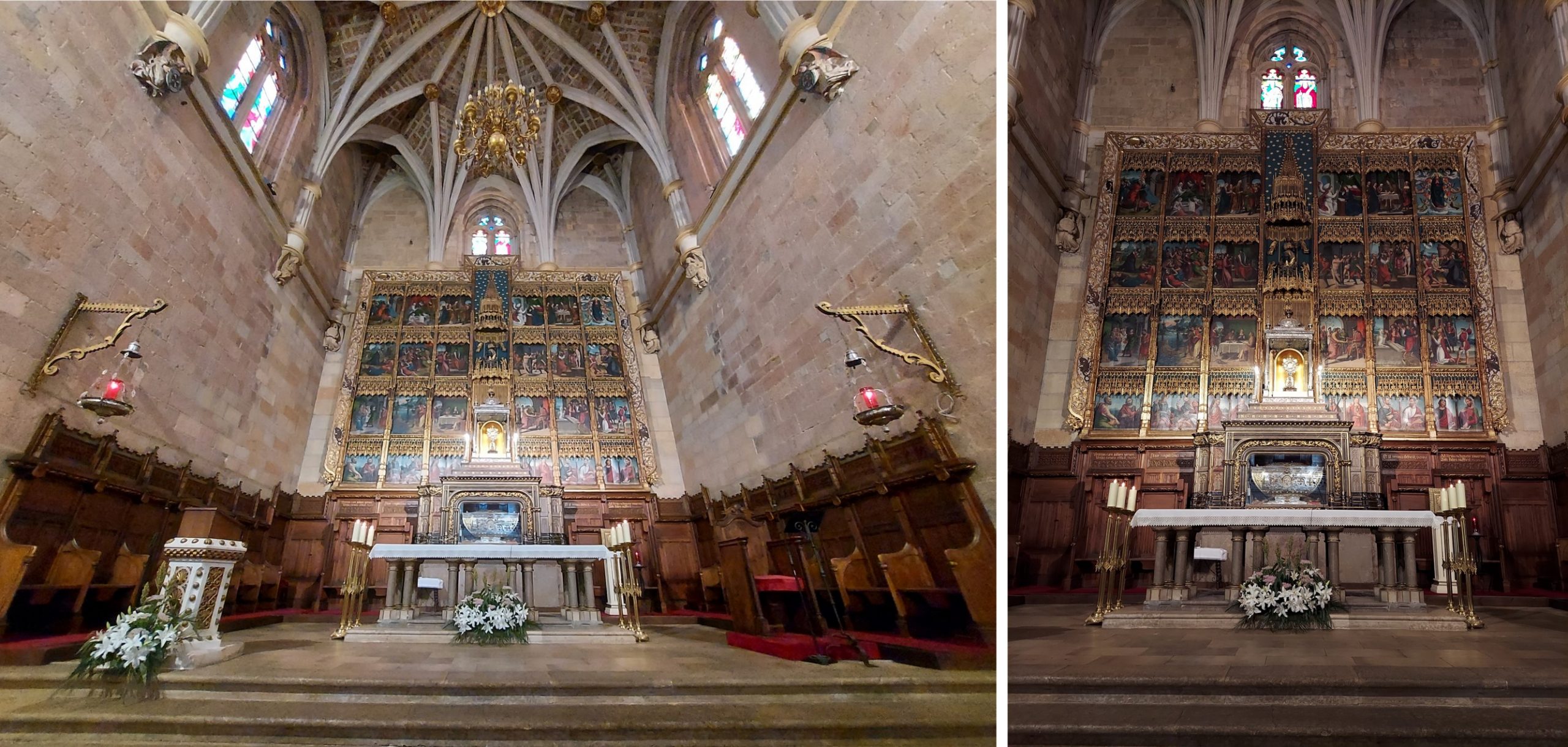
The Gothic altarpiece comes from the parish of Pozuelo de la Orden (Valladolid) and was transferred to San Isidoro in 1920, when this town belonged to the bishopric of León. It was carved between 1525 and 1530 and consists of twenty-four panels.
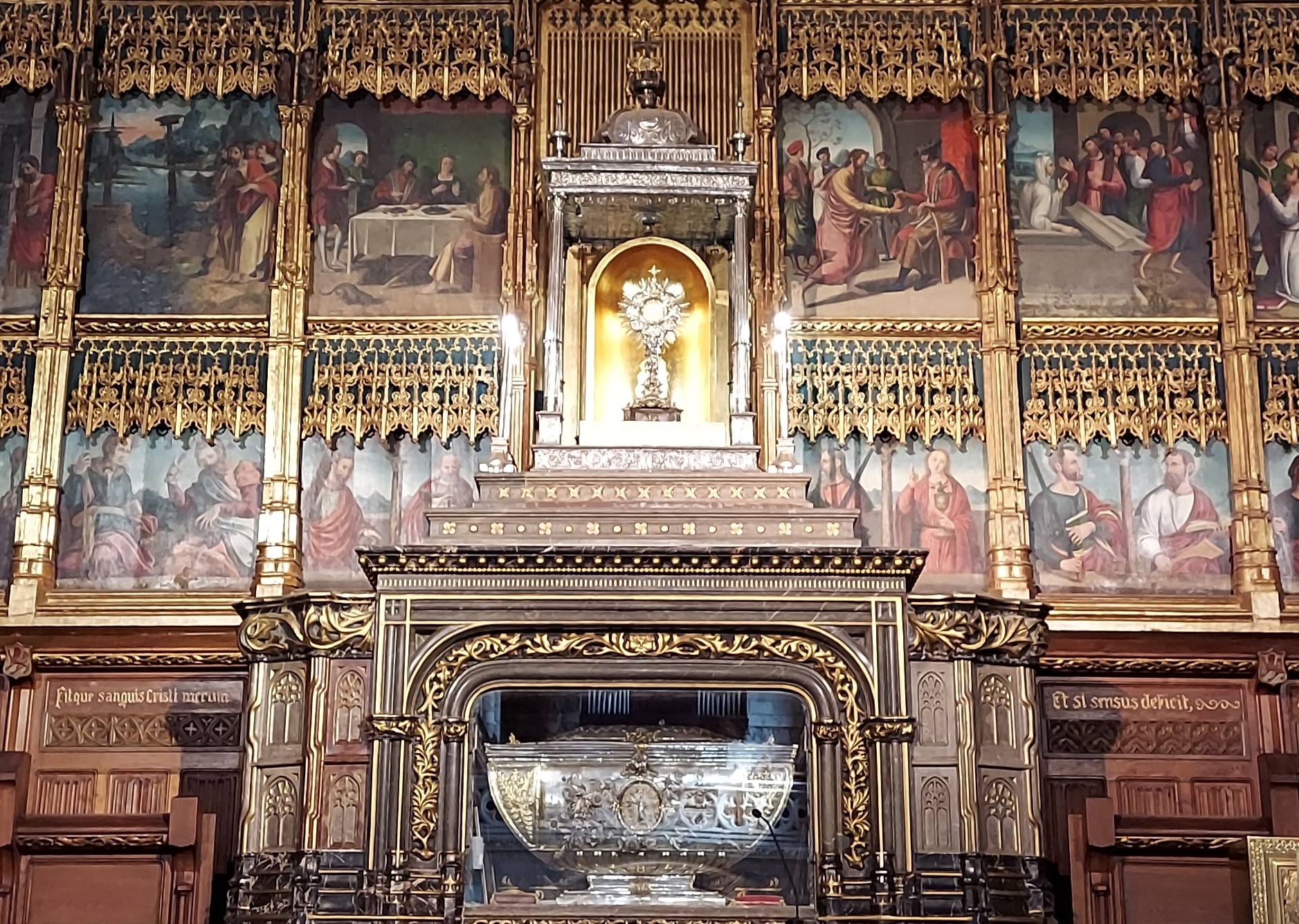
The monstrance is made of silver, by the artist M. García Crespo, and keeps the consecrated host exposed day and night by a very old papal privilege, which it shares with the cathedral of Lugo. Under the monstrance and in a preferential place is the neoclassical urn that preserves the remains of San Isidoro, a work that the Leonese silversmith Antonio Rebollo made in 1847.
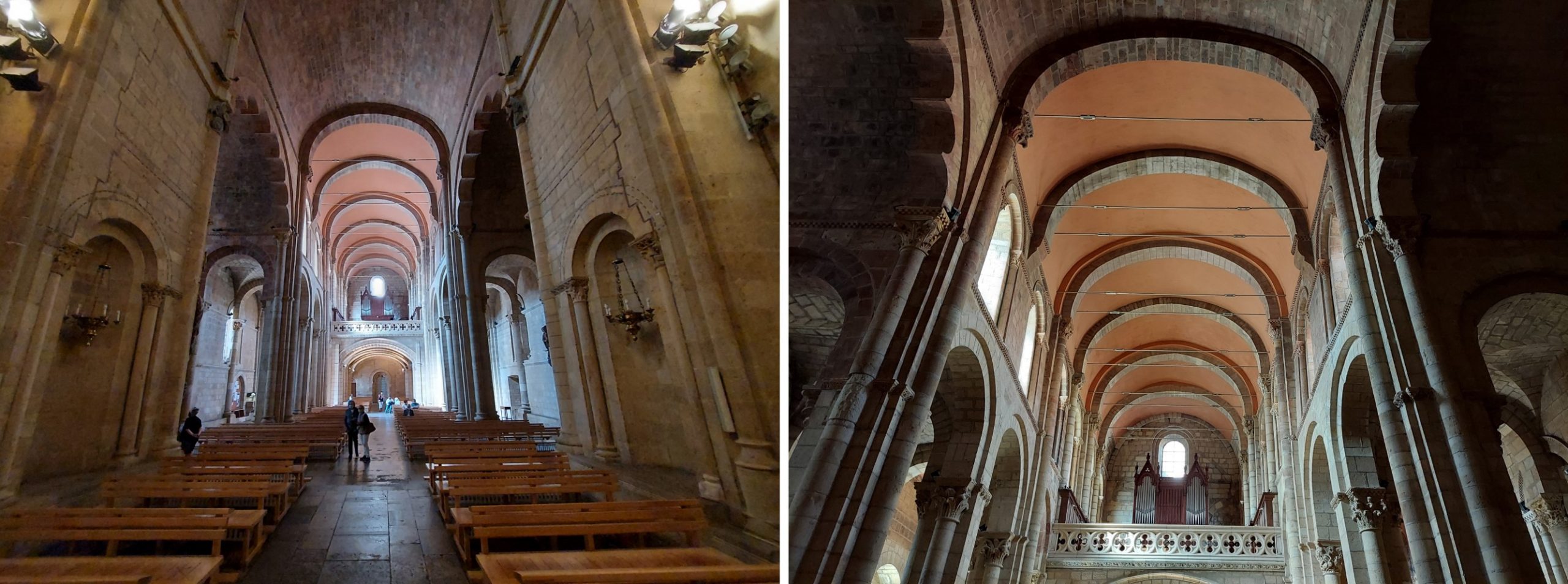
The choir loft at the foot of the Basilica of San Isidoro is from the first half of the 15th century, in Gothic style.
In the second part of our tour of the Basilica of San Isidoro de León, we will be visiting the Museum, the Cloister, the Royal Pantheon and the Torre del Gallo.
Resources:
– https://es.wikipedia.org/wiki/Bas%C3%ADlica_de_San_Isidoro_de_Le%C3%B3n
– https://www.museosanisidorodeleon.com/basilica-isidoriana/
– https://www.milviatges.com/2021/basilica-san-isidoro-panteon-reyes/
– https://www.museosanisidorodeleon.com/el-claustro/

